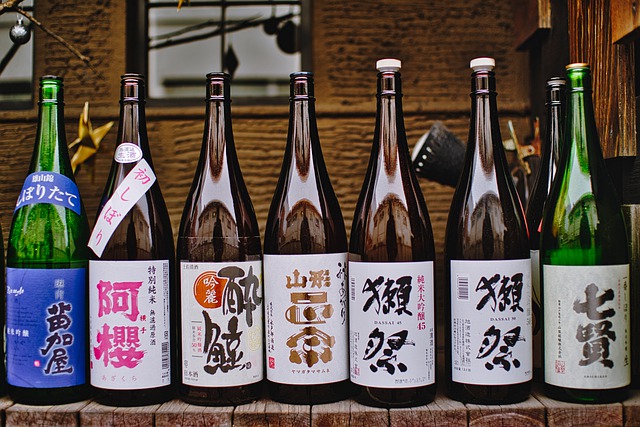
Sake is an alcoholic beverage made from boiled rice. Commonly called Nihonshu (Japan 酒) in Japanese (a variation of “once” in Japanese which can often refer to alcohol), the drink has gathered widespread popularity and is served in all types of restaurants and bars. And as interest in Japanese cuisine has grown worldwide, it has once again become the world’s most popular beverage.
The good quality of Sake is due to the unique combination of rice, clean water, koji molds, and yeast. They are combined and fermented in refined techniques. Generally, filtered (although refined products are available) light yellow wine comes with a slight yellowish content of about 15 percent alcohol. The soft-flavored profiles, ranging from light and pure to rich, fruity notes are available. Sake goes well with almost any type of food but we recommend the soft taste of traditional Japanese food very well.
Currently, there are about 1800 Sake bars throughout Japan, especially in popular producer areas such as Niigata, Kobe, and Kyoto.
Now, let’s have a look at the amazing Sake nutrition facts in detail.
Contents
Sake Nutrition Facts Chart
One serving or say 100 grams of Sake contains:
- Calories: Up to 134 grams.
- Protein: Up to 0.5 grams.
- Carbohydrates: Up to 5 grams in 100 grams of Sake.
- A small amount of potassium.
- Copper
- Calcium
- Zinc
- Selenium
Here’s a more detailed chart on Sake nutrition facts for reference.
Some Amazing Sake Nutrition Facts – (Is It Healthy For Drinking?)
- Sake contains a lactic acid bacterium called lactobacillus. Lactobacillus is a probiotic that can assist with digestive complications.
- Additionally, Sake can lower the mortality rate due to cirrhosis and lung cancer than other alcoholic beverages such as beer, whiskey, and Shochu.
- Sake amino acids (e.g. Valine, Leucine, and Isoleucine) help to heal and build skeletal muscle, preventing osteoporosis.
- Also, Koji, one of Sake’s main ingredients, contains 5 types of Cathepsin-L inhibitors that help prevent osteoporosis.
- Moderate Sake drinking prevents heart disease and brain disease by preventing blood clots and lowering cholesterol.
- Sake has been found to contain 3 types of peptides that help prevent Alzheimer’s disease and Vascular Depression.
- Sake, Sake lees, and Koji contain a variety of substances that inhibit the activity of melanin, a major cause of sunspots, age spots, and freckles.
- Sake has been consumed as a toner in Japan. This is because Sake contains many saccharides and amino acids used as cosmetics.
- Sake contains antioxidants called Ferulic acid, which may have an anti-aging effect.
- Sake is made only from natural ingredients. It is full of vitamins and minerals that are good for the intestines which are important for our health.
Final Words
Sake includes a combination of various nutrients such as amino acids, vitamins, minerals, and organic acids. In particular, it contains a good balance of nine essential amino acids, which cannot be synthesized in the body and can only be found in food. Sake includes a mixture of nutrients and has a variety of advantages, and if you understand how to relish Sake well, you can foresee health and beauty benefits.